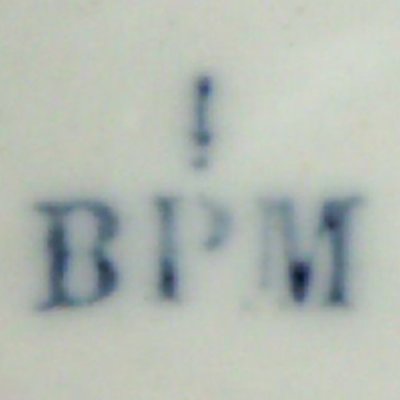
Image 011003-01-01
Used until around 1849.
I would like to thank Mr. Jens-Uwe Teichfischer for his additions in this matter. Three self-proclaimed "experts" wanted to actually sell me their "one-and-only-correct-and-self-researched version" of the company history. Yes, people trying to sell information to a free website; I believe that requires no further comment.
Around 1756 a faience and stoneware factory had been founded in the town of Magdeburg and the success of that business might have been the inspiration for further businessmen, like a certain Paul Müller that had founded his small business just outside Buckau in 1833. Müller however in 1838 sold his small firm to the printer Falkenberg and the lithography specialist Rieß who the same year bought more land in the Feldmark area, just outside the old Magdeburg fortifications and right in the middle between the river Elbe and the newly-built train station of the Magdeburg-Halle-Leipzig railroad. Some people by now will know the answer for the many different dates given for the factory founding: the 'real' factory was founded by Falkenberg and Rieß in 1838 and opened 1839 but as they had previously purchased the small business from Müller the further purchases were counted as extensions of exactly that business object and thus the 'founding date' officially became 1833 which was later even issued on self-produced presentation items.
Quickly both quality aspects and artistic demand rose to a very high level and all employees therefore had to be highly skilled professionals. Jakob Uffrecht for example who worked as modeller between 1843 and 1845 went on to found his own company, the also well known Siderolith- und Steingutfabrik J. Uffrecht (later Carstens-Uffrecht) in the town of Neuhaldensleben (which later became part of Haldensleben). Manager W. Hermann Kupfer who was employed between 1843 and 1851 became one of the founders of Kupfer & Koch in Magdeburg and factory manager and director Heinrich Witte (employed 1849 until 1862) was easily able to change to the ducal porcelain manufacture of Fürstenberg and take over production there in 1862. Many designs produced in Buckau were designed by artists like Friedrich Maximilian von Heider (short Fritz von Heider) a well-known painter, designer and ceramics artist who was not only a teacher at the Kunstgewerbe- und Handwerkerschule in Magdeburg but later also worked together with artists like Rudolf Bosselt and Hermann Muthesius (the latter being the founder of the Deutscher Werkbund).
At first the company specialized on household goods like washing sets and standard tableware but soon also started to manufacture finer coffee- and tea sets, hotel porcelain and restaurant ware and especially during the early years one can still recognize the strong influence that items and series made by Johann Gottlob Nathusius (Althaldensleben) or F.A.Schumann (Berlin-Moabit) had. But over time the factory in Buckau slowly but surely advanced to find its own 'line' and in 1869 the company its first silver medal at the industry and trade fair in Wittenberg; already in 1893 it won two gold medals, one in Magdeburg and another at the Hamburg-Altona (Lower Saxony) exhibition. Constantly refining their items and finally presenting their first completely own design, the typical Buckau mold was an instant success and was next to others the winner of the 1904 silver medal at the world exhibition in St. Louis (USA).
Even if there is not much known about the following years, at least the Handbuch der Keramikindustrie lists the company in 1913 with an entry stating that the Buckauer Porzellanmanufactur Akt.-Ges. employed 200 people, the largest reported number of employees the business ever had. Due to the changing influences in design however, overall success had become more and more little like a helter-skelter ride and in 1916 the main production moved to the premises in Arneburg upon the river Elbe. Strongly shaken by the World Financial Crisis the factory produced its last items in 1926 before the factory was finally liquidated in 1930.
On October 22nd 1946 the businessman Ernst Linder had a new firm registered in the Magdeburg city trade register; this was not related with the previous BPM and only existed for a short period of time before it dissapeared from the register again.
The banner mark was from its introduction 1859/1860 onwards used in various sizes and different colors like black, blue or brown; from around 1890 it was then finally used in one size only and always applied in green. While these described versions were all used as stamped underglaze forms one can also find at least one overglaze version in red as well as an impressed version. Other mentioned marks include two different factory marks (one round, one oval) as well as two different additional markings stating gesetzlich geschützt, which are also present either in round or oval form and applied either under- or overglaze.
One specific mark sadly not included here shows the initials "BPF" for Buckauer Porcellan Fabrique instead of "BPM" for Buckauer Porzellan-Manufaktur.

Image 011003-01-01
Used until around 1849.
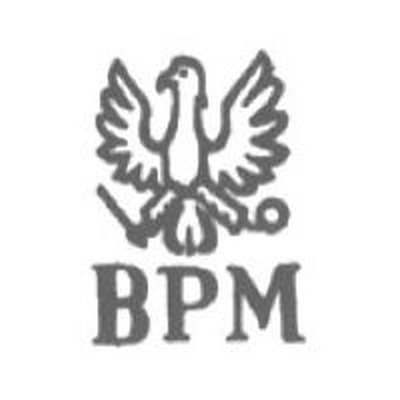
Image 011003-01-01
Used from around 1849 until around 1874.
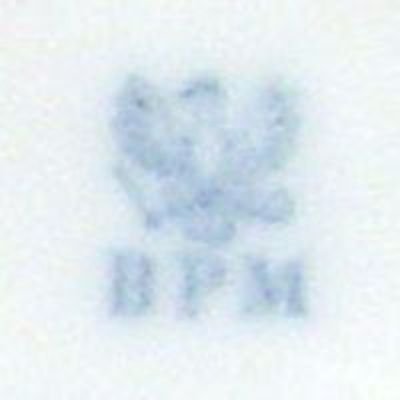
Image 011003-01-01
Slightly blurry example of the first eagle mark.
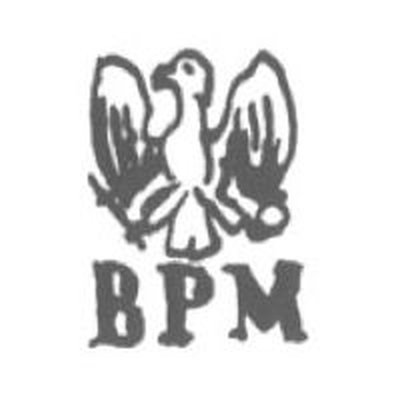
Image 011003-01-01
Used from around 1849 until around 1874.
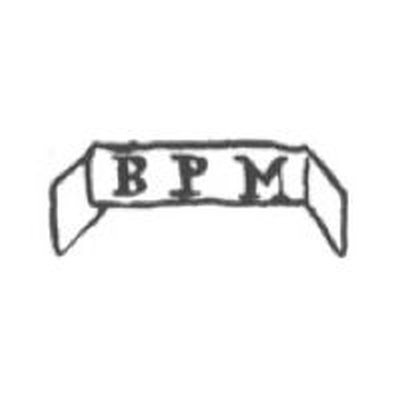
Image 011003-01-01
Used from around 1859/1860 onwards until 1929.
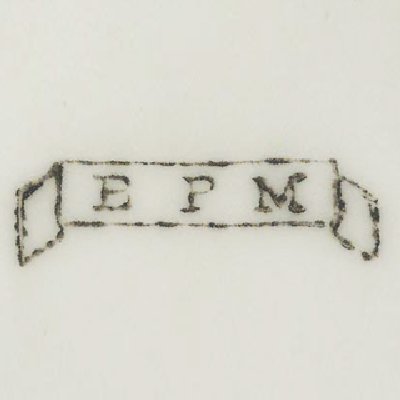
Image 011003-01-01
Used from around 1859/1860 onwards until 1929.
© 2004-2024 C.S.Marshall, all rights reserved